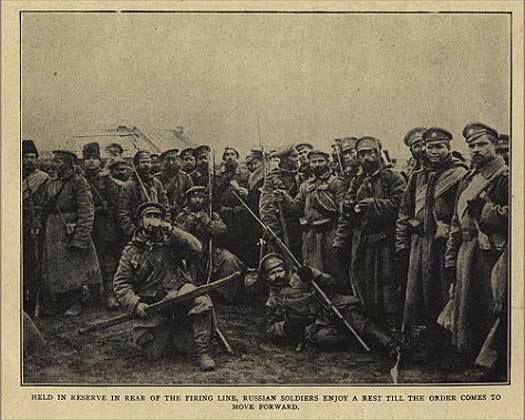Anglo-French Forces Dig in at the River Marne
Special to The Great War Project
(4 September) These are crucial days on both the Western and Eastern fronts.
In their long retreat in the West, Anglo-French forces pull back south of the River Marne in France. There they dig in, ready to take on the Germans.
This is key to the fate of Paris, less than 25 miles away. “By chasing the retreating Anglo-French forces not to Paris but beyond the River Marne,” writes historian Martin Gilbert,
“the Germans lost the chance of taking the capital.”
Nevertheless the appointed Military Governor of Paris declares: “I have received the order to defend Paris against the invader. This order I shall fulfill to the end.”
The pursuing Germans are exhausted. They have been chasing the Anglo-French forces on foot for more than thirty days.
The logistical burden for them is enormous. Just one example: as they withdraw the French and Belgian forces blow up railway lines that could help the Germans move men and weapons in their pursuit of the French and British. To repair these lines, writes Gilbert, involves “26,000 German railway construction workers, whose work gradually became almost unmanageable.”
German railway supply lines bringing ammunition to their front stretch more than one hundred miles, almost to the breaking point.
Just as German supply lines stretch to the limit, pressure on the French lines eases. As the German problems worsen, the French and British supply and reinforcement lines shorten and improve. They are able to bring in a significant force of fresh troops.
Plus the Anglo-French forces are not going quietly. They continue to fight rearguard actions against the Germans. Psychologically, this takes a toll on the German troops.
The Germans assume the French will continue to retreat. That assumption proves to be wrong.
Of course, writes historian Max Hastings, “it was known on neither side that the Germans had now attained the extreme limit of their advance across France.”
On the Eastern Front, armies are also gathering for more battle. In August the Serbs expel Austrian troops from Serbian territory. But that’s not the end of it. The Serbs prepare to pursue the fight with the Austrians into Austrian territory.
The Russians press ahead with an offensive that brings them to Lemberg on this day a century ago. Then Lemberg is part of Austrian Galicia. Now it’s the city of Lviv in western Ukraine. The Austrians lose more than 150 miles of their territory, according to historian John Keegan. Austria, he writes, “had lost 400,000 men out of the 1,800,000 mobilized.”
These losses “deprive the Austrian army of its best and bravest element, never to be replaced.”


